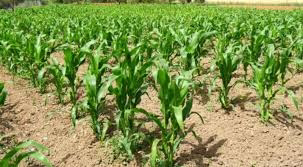Pomegranate farming
Pomegranate farming is the cultivation of pomegranate trees for their fruits, which are known for their juicy, sweet-tart arils and numerous health benefits. Pomegranate farming requires proper planning, cultivation techniques, and care to ensure successful production. Here's an overview of the key aspects of pomegranate farming:
Climate and Soil Requirements: Pomegranates thrive in subtropical and Mediterranean climates, with cool winters and hot summers. They require long, hot, and dry summers for optimal fruit development. The ideal temperature range is between 25-35°C (77-95°F). Pomegranates can tolerate a wide range of soil types but prefer well-drained loamy or sandy soil with a pH range of 5.5-7.5.
Variety Selection: Choose suitable pomegranate varieties based on your climate, market demand, and intended use of the fruits. Some popular commercial varieties include Wonderful, Hicaz, Bhagwa, and Mollar de Elche. Consult with local agricultural experts or nurseries to determine the best varieties for your specific region.
Land Preparation: Prepare the land by removing any weeds, rocks, or debris. Conduct soil testing to assess nutrient levels and make necessary amendments. Pomegranates benefit from organic matter additions, such as compost or well-rotted manure, to improve soil fertility and structure.
Planting: Pomegranates can be propagated from seeds, but it is more common to use grafted saplings to ensure consistent quality and desired characteristics. The recommended planting time is during the spring season when the soil has warmed up and the frost risk has passed. Maintain a spacing of about 4-6 meters (13-20 feet) between the plants to allow sufficient room for growth.
Irrigation: Pomegranate trees require regular watering, especially during the first few years of establishment. Adequate irrigation is crucial during the fruit development stage. Drip irrigation is often preferred as it helps conserve water and provides targeted hydration to the root zone.
Pruning and Training: Pruning helps in shaping the tree, promoting better sunlight penetration, and enhancing air circulation, which reduces disease incidence. Prune during the dormant season to remove dead, diseased, or crossing branches. Training young trees through appropriate pruning methods, such as central leader or open vase systems, promotes a strong framework and facilitates harvesting.
Fertilization: Regular fertilization is essential to maintain healthy pomegranate trees and maximize fruit production. Conduct soil tests to determine nutrient deficiencies and apply fertilizers accordingly. Nitrogen, phosphorus, and potassium are the primary macronutrients required, along with secondary and micronutrients. Follow the recommendations provided by local agricultural authorities or experts.
Pest and Disease Management: Common pests affecting pomegranates include aphids, mealybugs, thrips, and fruit flies. Implement integrated pest management strategies that combine cultural practices, biological controls, and judicious use of pesticides when necessary. Common diseases include fungal infections like powdery mildew and fruit rot. Timely pruning, maintaining good airflow, and applying appropriate fungicides can help manage these diseases.
Harvesting: Pomegranate fruits typically ripen around 6-7 months after flowering. Harvesting time may vary depending on the variety and climate. Ripe fruits should have a deep color and make a metallic sound when tapped. Cut the fruits carefully with pruning shears to avoid damage.
Post-Harvest Handling: Handle pomegranates gently to prevent bruising and damage. Store them in a cool, well-ventilated area with proper humidity levels. Pomegranates can have a storage life of 2-3 months
Follow me more details
Click on the link 🔗🖇️👇






Comments
Post a Comment